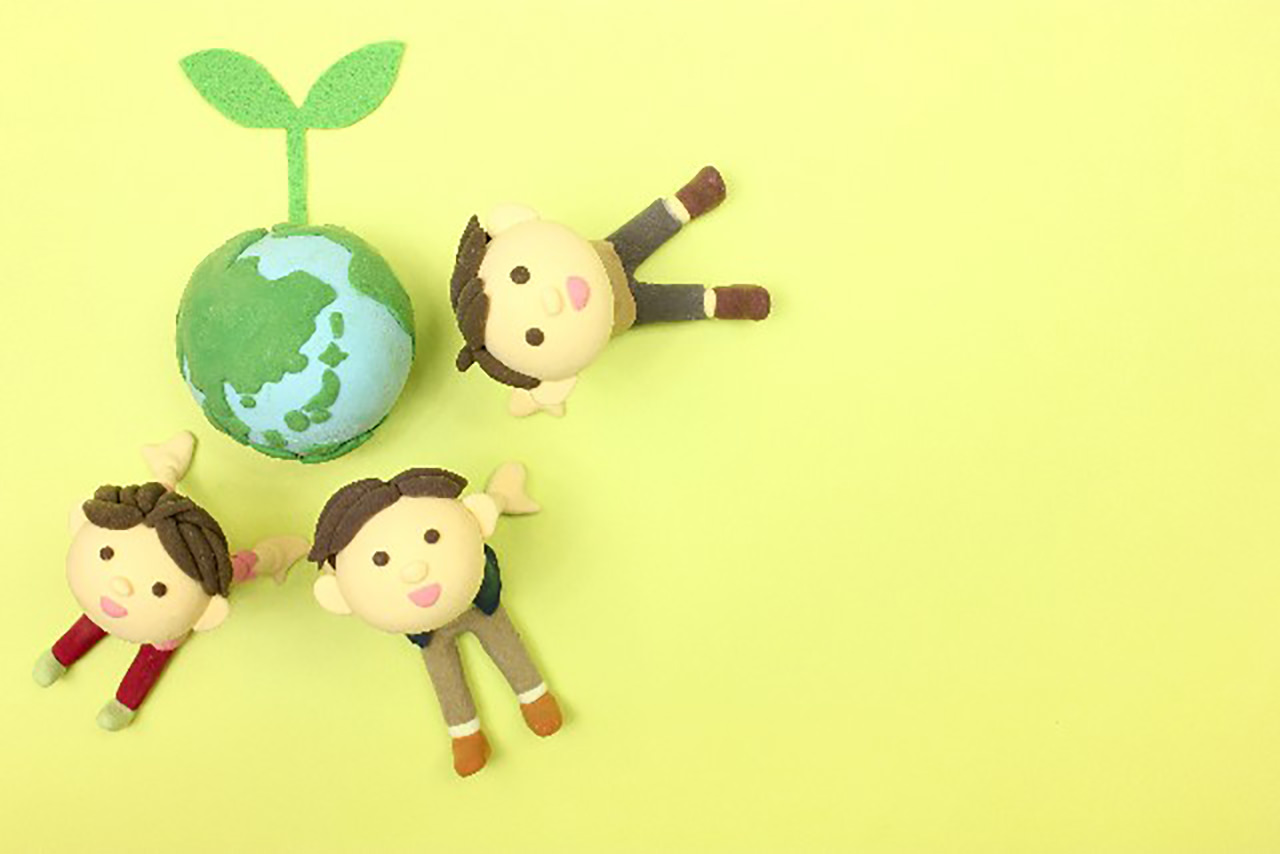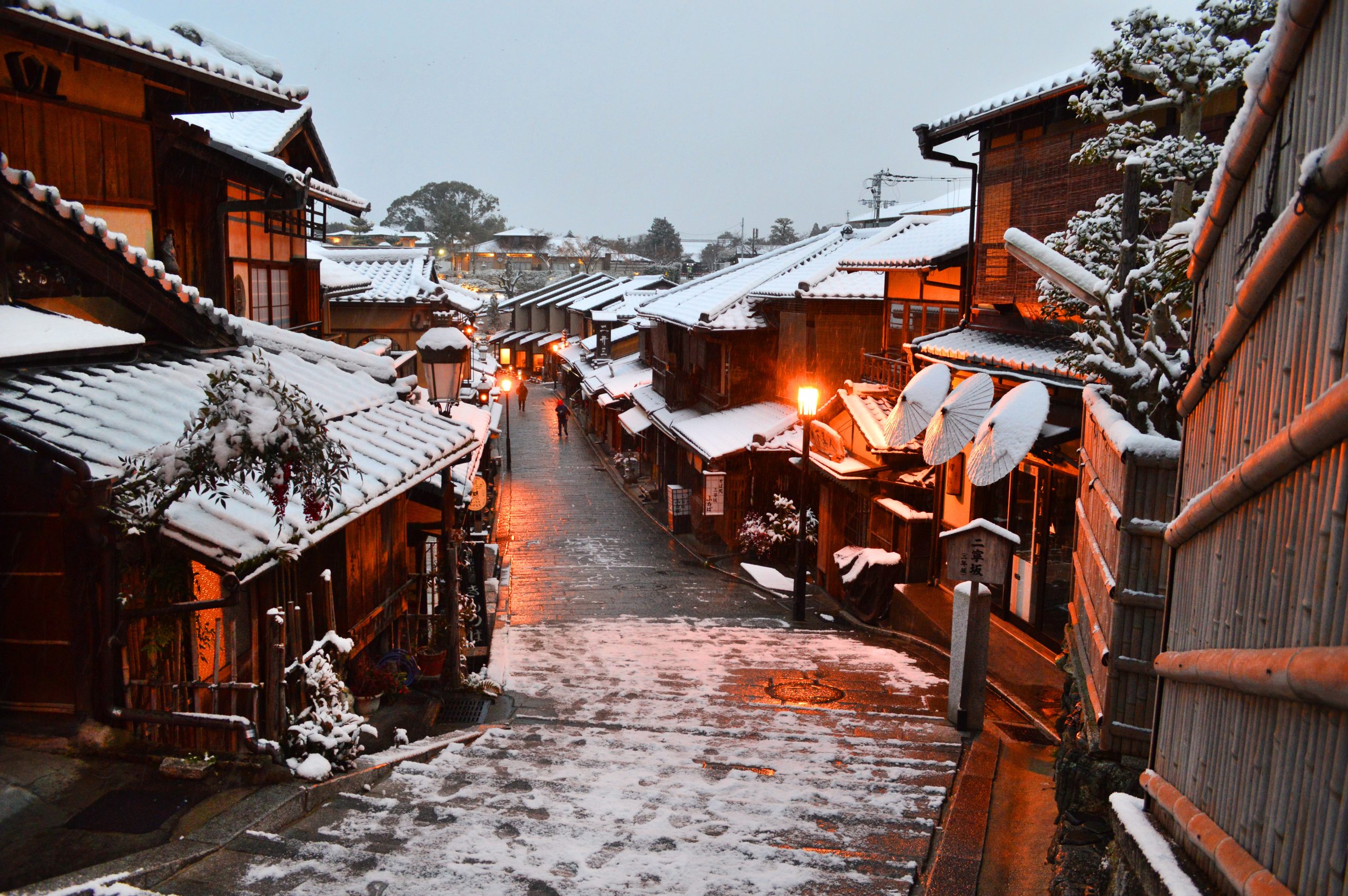Taking part in community activities in Kyoto!
2020.08.07
Taking great care from the very start
On the tour, I was able to experience the growing, treatment, and manufacturing process of these cedar trees step by step. I arrived first at a cedar forest, and when I made my visit, it was just after the trees had been pruned. I was told that by leaving the good branches above and trimming off the branches around the base, the tree trunk will grow straight and round. It also increases the value of the cedar as a product.
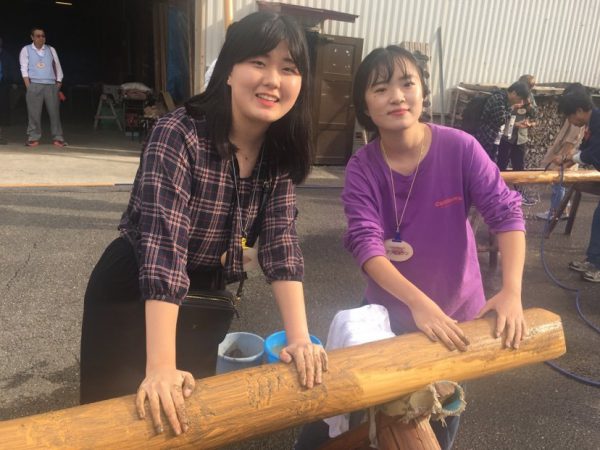
Touching the wood with my own hands, and putting my love into it
Selected cedar trees are moved to a processing workshop, where their bark is removed and the wood is made smooth. I put on some work clothes, too, and tried my hand at removing the outer layers with a hose. I tried to control the direction of the water coming out of the hose to remove the bark, but the water pressure was greater than I expected, and my whole body was pushed backwards—it was a lot of fun!
Once the bark has been removed, a traditional method of coating the wood with mud is used to make the wood surface smooth. When I spent some time rubbing the wood with my own hands, it became soft to the touch, and I began to feel a fondness for it. I began to hope that this bit of wood, each piece of which has been carefully handcrafted, will end up a good product, undamaged, and that someone will love it.
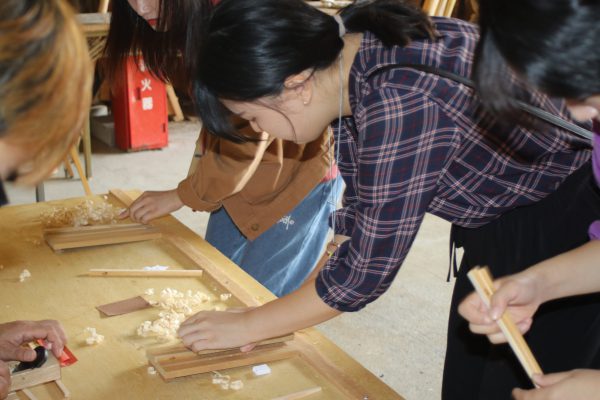
Finally, we used the cedar wood to make chopsticks. It wasn’t so easy to shave them down to a size that fits perfectly in the fingers. I compared mine to the person next to me, and did my best to bring out the cedar’s original color as I completed a pair of my very own chopsticks.
Even on the ride home, I could see lots of Kitayama cedars as I looked out the car window.
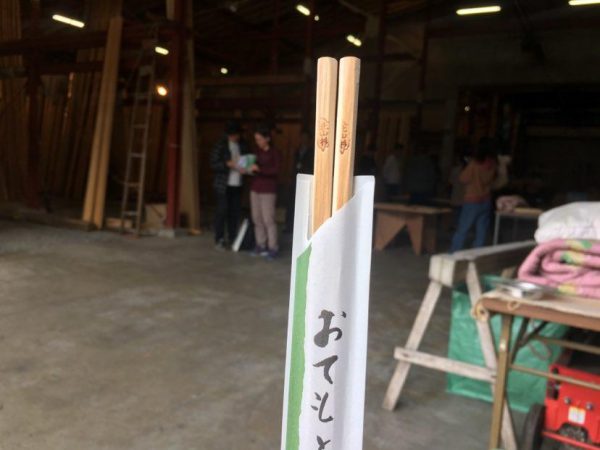
Kitayama Cedar, connecting people with nature
I also bought a Kitayama cedar picture frame for a friend of mine who lives in another part of the country. “It smells like Kyoto,” she told me happily.
I think what’s Kyoto-like about Kitayama cedar is that it connects people and nature. You can see cedar trees anywhere in Japan, but I think what’s special about Kyoto’s Kitayama cedars is their connection to people who seek to cherish nature.
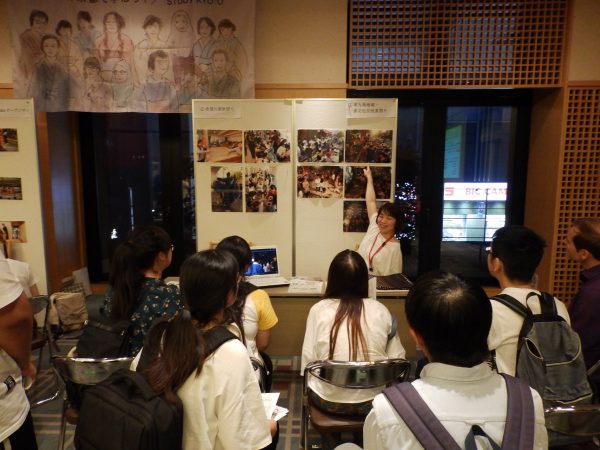
Together, as Kyoto people
As I participated in the Kitayama cedar tour through the meet-up event, I really felt I was able to actively experience Kyoto as a Kyoto person. I was really glad to be able to help make a bit of Kyoto with the others.
I think one of the most meaningful things for international students is to feel that you have a role to play. I think I’d like to find more things that I can do by participating in other local activities. Why not join me?






